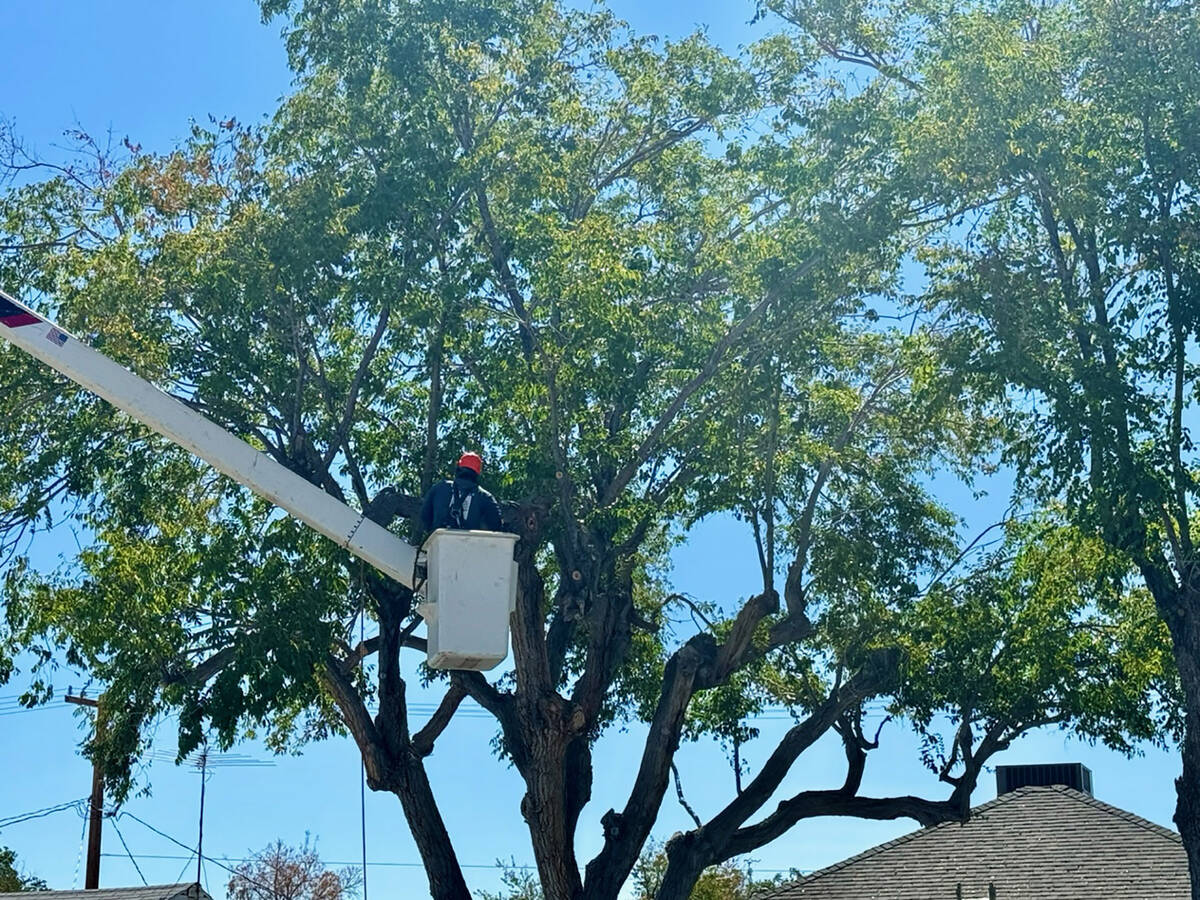Trimming keeps trees healthy, property safe
Oh, how we love the cooling shade from a glorious tree, especially during this exceptionally hot Indian summer. With deciduous (leaf dropping) trees well through their growing season, it’s now that we find overgrown branches hanging over or hitting houses, encroaching on neighbors’ property, entangling power/cable lines, etc.
There are many reasons to trim trees, and preventing them from causing harm is one. Branches scratching a roof can cause tiles to wear prematurely. Weak and dead branches can fall, harming people and property. Given the right conditions, branches interacting with power lines can cause outages, fires, and electric shock.
Trimming trees also keeps them healthy. “Trimming trees in fall gets air flow through the branches, sending them into a good kind of “shock,” preparing them to be stronger in the springtime,” explains Lukas Bunnell, owner/operator of Nevada Tree Service. Cleaning up dead branches and looking for evidence of disease or infestation is crucial for proper maintenance. Small holes in the bark could denote bugs, powdery leaves may be signal fungus, misshapen leaves could mean root rot. “Trees give us warning signs of sickness well before it becomes a big problem to fix,” Bunnell says. He also advises to trim deciduous trees before their leaves fall— “In the winter, once leaves drop, you can’t tell which branches are dead.”
Trimming also lightens trees, making limbs less susceptible to break and fall from wind and rain. Cleaning out “suckers,” small upright sprouts that come from the base or upper branches, is also important maintenance.
DIY trimming for smaller trees is doable with the right tools and proper cutting methods. Sharp bypass pruners, loppers and a pruning saw are must-haves. An extendable tree pruner or electric pole saw will help tackle taller and larger branches. Always protect yourself with safety glasses and gloves.
Be advised not to cut willy-nilly as this could damage tree growth. When trimming small branches, always cut ¼ inch above a bud and at a 45-degree angle to prevent water from pooling in the cut. Keep in mind that because trimming encourages growth, the direction the bud is facing will determine the direction of new growth.
When cutting larger limbs, to minimize pulling away the bark and damaging the tree, use the three-cut method:Make an undercut: About 12 inches away from the tree trunk, make a shallow cut on the underside of the branch, sawing about one-third of the way through.
Make a top cut: Move two inches further out from the undercut and saw from the top of the branch until it breaks free.
Final cut: With the majority of the weight removed, you’re ready to make the final cut. Remove the remaining stub by cutting just outside the branch collar, being careful not to damage this important area.” –ThisOldHouse.com
Cut no-no’s are: Flush Cuts (flush to the bark)—removing the branch collar (necessary to grow a seal over it), leaving it open to disease and pests.
Stub Cuts—opposite of a flush cut, leaving a protruding stub too long for the branch collar to grow over.
Topping—there are several reasons not to cut off the top of a tree including starvation, shock and disease. “We don’t top trees, it’s like chopping off its “head.” We only top certain trees like Italian cypress.”
I can’t emphasize strongly enough the dangers of trimming trees near power lines. According to NIOSH National Traumatic Occupational Fatalities (NTOF) Surveillance System, the leading cause of death among tree trimmers is electrocution. If it’s threatening to pros, imagine us. According to our city, “It is the property owner’s responsibility to keep trees clear of the electric service line that runs from the pole to the owner’s house. Boulder City Electric Division recommends the use of a trained tree trimmer to do this work.”—BCNV.org.









